Gwalior in the state of Madhya Pradesh is known for its royal lineage. Gwalior has the perfect blending of the tradition and modernity. It is one of the most developed cities of India with many renowned educational institutions and industries like cotton, ceramics and chemicals.The history of Gwalior is interesting. Legend has it that the name ‘Gwalior’ comes from a great sage, Gwalipa who cured Suraj Sen, the chief of the Kachwaha clan suffering from leprosy in the 8th century. Gwalior has seen many dynasties, which patronized the artists and the musicians who in turn popularized the princely state through their songs and writings. Gwalior city was the capital of the princely state of Gwalior until 1948 to 1956 when Madhya Pradesh merged with the Indian union.
HOW TO REACH
By Air:-
Gwalior City has its own international airport called Rajmata Vijaya Raje Scindia Air Terminal.Flights from all the major Indian cities connect the city to other parts of the country.
By Rail:-
Gwalior railway station is conveniently located on the Delhi-Mumbai and Delhi-Chennai rail link. Among major trains, the Taj and Shatabdi Express connect Gwalior with Delhi and Agra.
By Road:-
Gwalior is well connected by a good road network connecting all the major places in Madhya Pradesh and the surrounding areas. Gwalior is well linked with Agra (118 km), Jaipur (350 km), Delhi (321 km), Lucknow, Bhopal (423 km), Chanderi (239 km), Indore (486 km), Jhansi (101 km), Khajuraho (275 km), Ujjain (455 km), and Shivpuri (114 km).
WHAT TO SEE
Gwalior fort:-
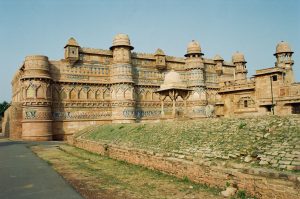 Gwalior fort was constructed about 1,000 years ago on the advice of Sage Gwalipa by Raja Surya Sen. It is said that the Gwalior fort is the largest fort of its kind. The outer wall of the fort occupies stretches 3.2 kilometers in length and about 35 meters in height.
Gwalior fort was constructed about 1,000 years ago on the advice of Sage Gwalipa by Raja Surya Sen. It is said that the Gwalior fort is the largest fort of its kind. The outer wall of the fort occupies stretches 3.2 kilometers in length and about 35 meters in height.
Man Mandir Palace:-
 Man Mandir Palace was built between 1486 and 1516 by Man Singh Tomar. The Man Mandir Palace is also known as Chitra Mandir because of the painted decorations and tiles. In fact, the palace is known for its color, design and motif.
Man Mandir Palace was built between 1486 and 1516 by Man Singh Tomar. The Man Mandir Palace is also known as Chitra Mandir because of the painted decorations and tiles. In fact, the palace is known for its color, design and motif.
Gujari Mahal and Archaeological Museum:-
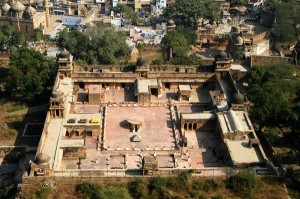 Gujari Mahal is a tribute to Gujar, the ninth wife of Man Singh. Gujari Mahal was constructed by Man Singh to commemorate his love for his wife. Presently, the palace houses a museum, which is known for its rare collection of stone carvings and other art works.
Gujari Mahal is a tribute to Gujar, the ninth wife of Man Singh. Gujari Mahal was constructed by Man Singh to commemorate his love for his wife. Presently, the palace houses a museum, which is known for its rare collection of stone carvings and other art works.
Sas-Bahu Temples:-
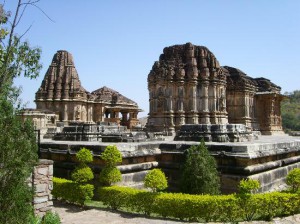 Sas-Bahu temples are two adjoining temples situated in the fort. The temples are of different sizes. The larger temple is sculpted with intricate patterns and beautiful figurines and motifs. The detailing and the beautiful interior of the temple, especially the roof which exhibits carved lotus, attract many tourists throughout the year.
Sas-Bahu temples are two adjoining temples situated in the fort. The temples are of different sizes. The larger temple is sculpted with intricate patterns and beautiful figurines and motifs. The detailing and the beautiful interior of the temple, especially the roof which exhibits carved lotus, attract many tourists throughout the year.
Memorial of Tansen:-
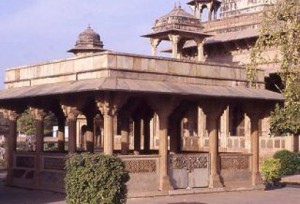 Memorial of Tansen is dedicated to Tansen and is situated near the tomb of Ghaus. Every year an annual music festival, known as Tansen Sangeet Samaroh, is held at this site in the memory of Tansen, one of Akhar’s nine gems. The music festival reveals the rich heritage of classical music in Gwalior.
Memorial of Tansen is dedicated to Tansen and is situated near the tomb of Ghaus. Every year an annual music festival, known as Tansen Sangeet Samaroh, is held at this site in the memory of Tansen, one of Akhar’s nine gems. The music festival reveals the rich heritage of classical music in Gwalior.
Suraj Kund:-
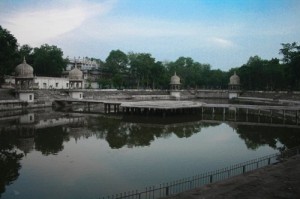 Suraj Kund was constructed in the 15th century. Suraj Kund is one of the oldest buildings in Gwalior, which is said to have existed even before the creation of Gwalior. Legends believe that Suraj Sen was cured of leprosy by Saint Gwalipa from the water of the pond.
Suraj Kund was constructed in the 15th century. Suraj Kund is one of the oldest buildings in Gwalior, which is said to have existed even before the creation of Gwalior. Legends believe that Suraj Sen was cured of leprosy by Saint Gwalipa from the water of the pond.
Sarod Ghar:-
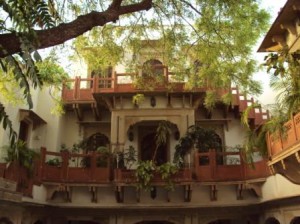 Sarod Ghar is one of the most important tourist attractions in Gwalior. The Sarod Ghar is housed at the residence of Amjad Ali Khan and is owned by Ustad Hafiz Ali Khan Memorial Trust. The museum is one of its kind in India and aims at promoting the culture of classical music of India.
Sarod Ghar is one of the most important tourist attractions in Gwalior. The Sarod Ghar is housed at the residence of Amjad Ali Khan and is owned by Ustad Hafiz Ali Khan Memorial Trust. The museum is one of its kind in India and aims at promoting the culture of classical music of India.
Kala Vithika:-
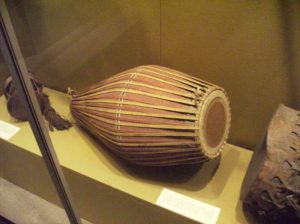 Kala Vithika is one of the most popular tourist attractions in Gwalior. The tourists can get a glimpse of the history and culture of Gwalior at Kala Vithika. The museum offers a delightful experience to the tourists coming to Gwalior.
Kala Vithika is one of the most popular tourist attractions in Gwalior. The tourists can get a glimpse of the history and culture of Gwalior at Kala Vithika. The museum offers a delightful experience to the tourists coming to Gwalior.
Scindia Museum:-
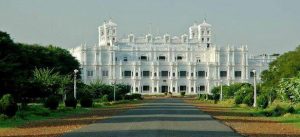 Scindia Museum, situated in the Jai Vilas Palace, was established by a private trust in 1964. The Scindia Museum of Gwalior is one of the most popular tourist attractions that witness huge tourist traffic every year. The museum is known for its rich collection of manuscripts, miniature paintings, weapons, sculptures, coins, bronzes and other items.
Scindia Museum, situated in the Jai Vilas Palace, was established by a private trust in 1964. The Scindia Museum of Gwalior is one of the most popular tourist attractions that witness huge tourist traffic every year. The museum is known for its rich collection of manuscripts, miniature paintings, weapons, sculptures, coins, bronzes and other items.
SHOPPINGÂ :-
Shopping in Gwalior is going to be a fabulous experience for the tourists who would like to carry home authentic items
with a royal splendour. The Gwalior bazaars are perhaps the oldest in Madhya Pradesh.The shops in Gwalior have a lineage of centuries and were once patronized by the royalty in Gwalior.
If you are looking for souvenirs with a traditional touch, you will find them in the shops near Rajwara, Laskar and Patankar Bazaar. You can choose from a range of art and craft items like lacquer ware, dolls, handwoven carpets, wall hangings and jewelery which make good gifts to carry home. Gwalior is famous for its Chanderi sarees and if you wish to buy them you should go to the Chowk at Bara.You can also check out the state government run emporiums which has a fascinating collection of arts and crafts of Madhya Pradesh from dokra figurines and tribal jewelery to hand-woven sarees and fabrics.
FOOD:-
Gwaliorites love to gorge on Kachories’, mouthwatering samosas’ served with chutneys and spicy potato curries in the breakfast.For those who have a sweet tooth , Jalebis and the famous Rabdi will compel them to ask for more.Visiting Gwalior and not trying out the crucncy Morena Gazak – a food item made up of jaggery and Til usually in winters ,is a non-bailable offence.